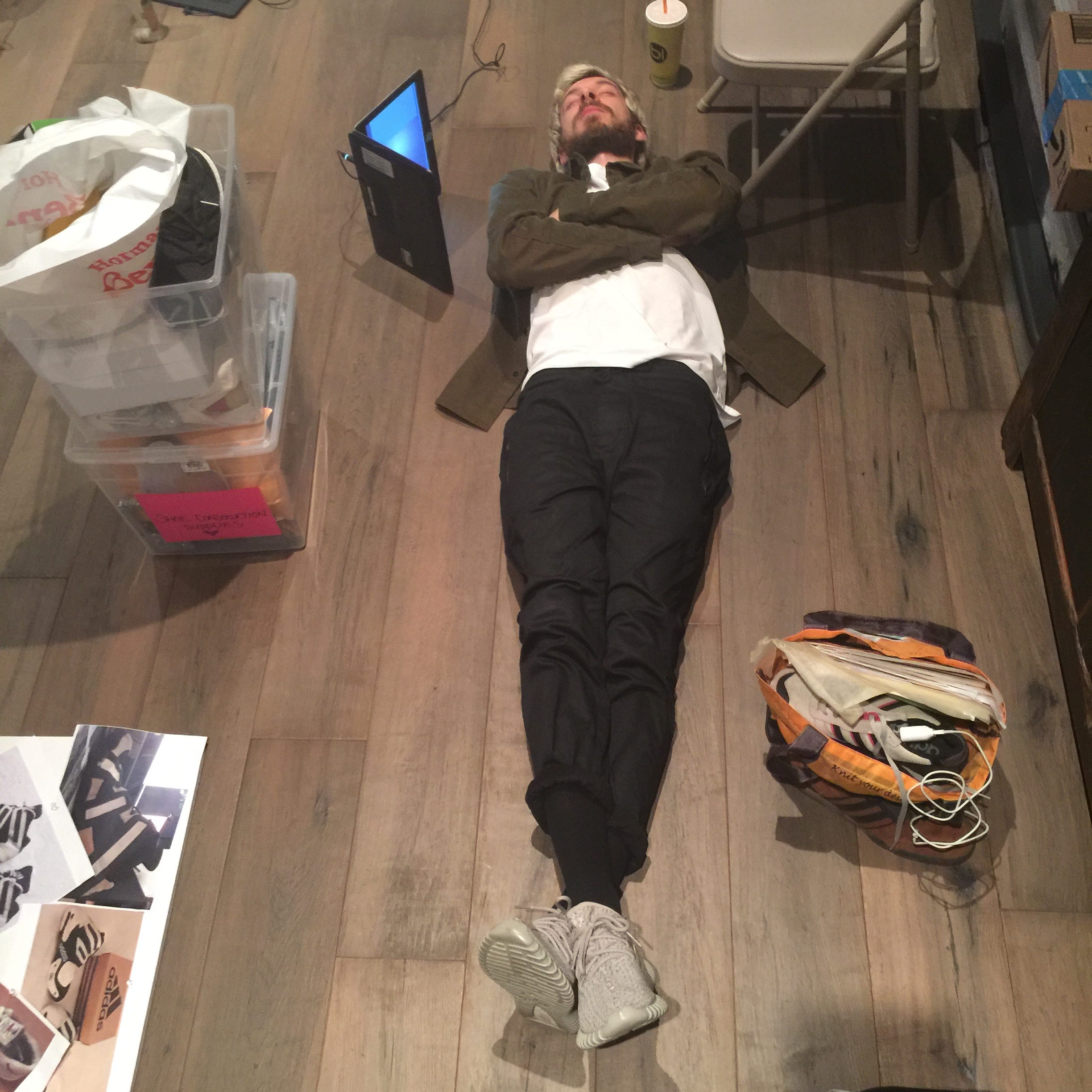
Arrested Development
The Jordan 3 had Steve Mellor. The Jordan 13 had Jim Grove. The Foamposite had Jeff Johnson. The Max Uptempo had Peter Lam. The Max+ 2009 had Bryan Ferris. The LunarGrand had Steve Beccia. The 350 v2 had Benno Krysztofiak.
The product creation team is often a triad of three disciplines: design, marketing and development. You can find successful projects without designers. You can find successful projects without marketing. You won’t find a successful project without developers.

While designers become famous and marketing managers eventually run the business, developers are typically behind the scenes making everything move on time and stay on budget because they can anticipate every bump in the road between concept and wear. There can be great shoes without great designers or marketing managers, but there’s no way for a shoe to be successful without the planning of materials and shipping and molds and changes and meetings and colors and testing and factories and stitchers and engineering and costing and personalities.
Through countless meetings and changes the developer can be trusted to keep track of every decision and interaction in order to maintain progress. They are always taken for granted. They are always the last to know. They are always blamed for not being able to deliver the impossible. It’s a thankless job.

When I landed on Nike campus with an engineering degree and a passion for drawing, Howard White introduced me to two legends through email so I could learn what job I should focus on.
Tracy Teague was the Design Director for football and baseball shoes. He contacted me almost immediately and explained what he was working on and how design worked at Nike. He was incredibly nice and forthcoming.
Steve Roth was the Development Director for basketball. He never returned an email or voicemail.
Essentially, that became my answer.

A year later I found myself in a design job where I finally met Steve Roth. He was blunt. He was honest. He was focused. He was not someone you’d describe as friendly.
Over the next few months I’d watch him fight for his team of developers as they focused on delivering the world’s greatest product to NBA floors and Footlocker shelves. All of the prestige and accolades went to design and marketing. All of the pressure was on development. When a shoe was highlighted on ESPN the designer was celebrated. When a shoe exploded on SportsCenter the developer was disgraced.
Steve Roth fought for that team.
My engineering background meant I always had an appreciation for the complex nature of ‘making things’, so I often bonded with the development side before I knew who was on the marketing side. I actually proposed working in Asia as a designer that focused mainly on supporting development.
By the time I reached Yeezy I more than understood the value of having a powerful developer. There were several talented developers working at Adidas, but my right hand on projects was Benno — he can go by one name.
Requests from Ye ranged from the minor to the improbable to the impossible. I approached all three the same way because that’s how you move the needle. Those simple requests can turn into unclimbable mountains and those impossible requests may already be sitting on someone’s desk on the other side of the world.
Benno and I would sit at factory tables an hour outside of Guangzhou and attempt to turn water to wine. The factory employees would watch us argue for 25 minutes about a last or a rubber or a knit or a foam until we had an ‘A Ha!” moment. I’d draw and he’d explain. I’d calculate and he would organize.

750’s. 350’s. X50’s that never saw the light of day were constantly being molded and shaped through email, phone calls, video chats, texts and emoji. The entire time I had to juggle Ye and Benno had to juggle Adi. There were dozens of people to please and only the two of us on a steady diet of factories and blueprints.
Along the way reinforcements joined and eventually replaced us as the business grew larger.
The 350 v2 was one of the most technical project I’ve worked on. From the last to the tooling to the knit, we reinvented every aspect of that product in a way that made it look as though very little was done. And Benno kept track of every sample.
At one point we began labeling samples by the day and hour in which we worked on them. I’m pretty sure the final v2 was based on the ‘Thursday After Lunch’ sample.
And Benno knew every sample.
Even in his sleep.


